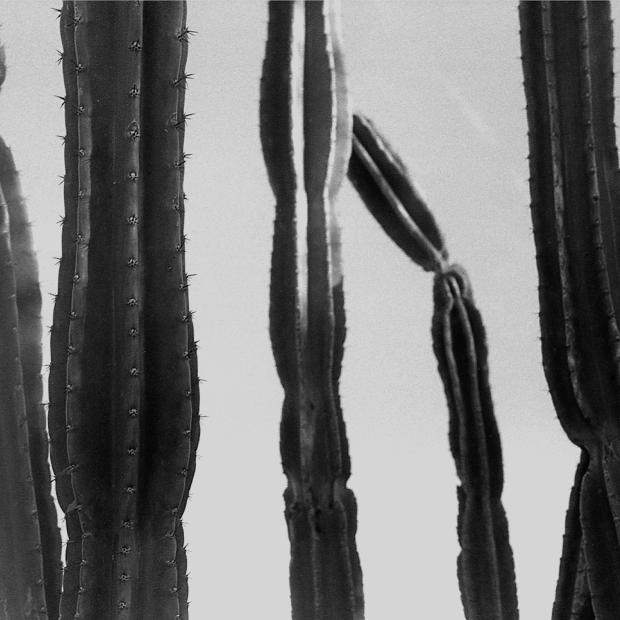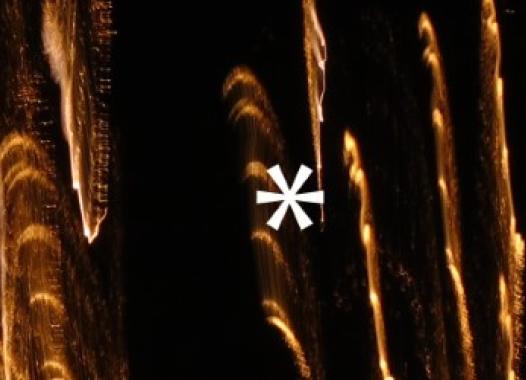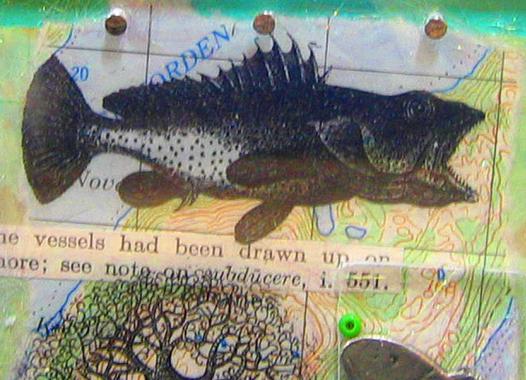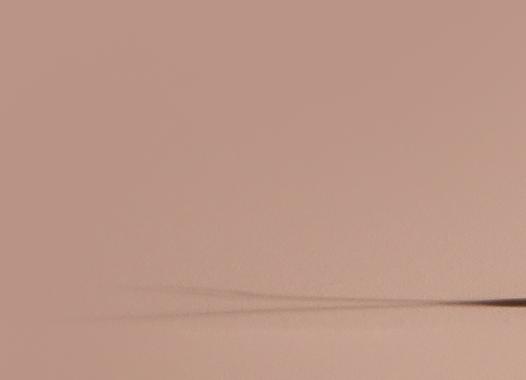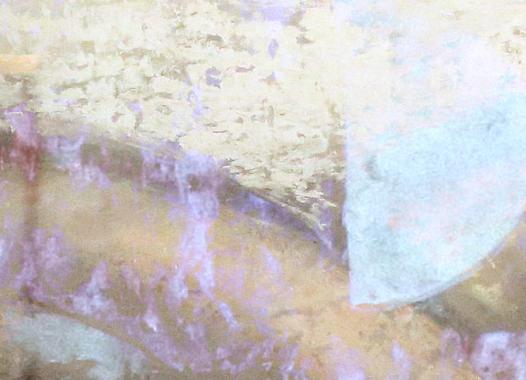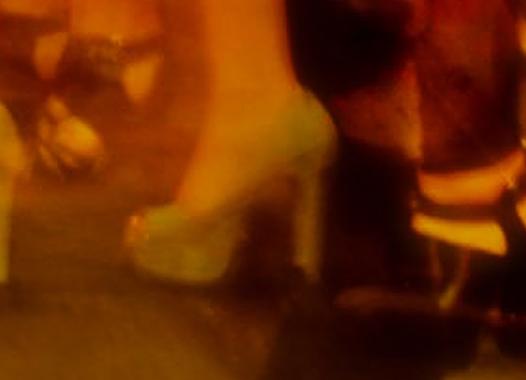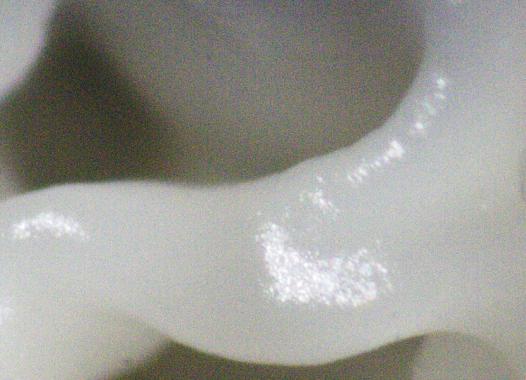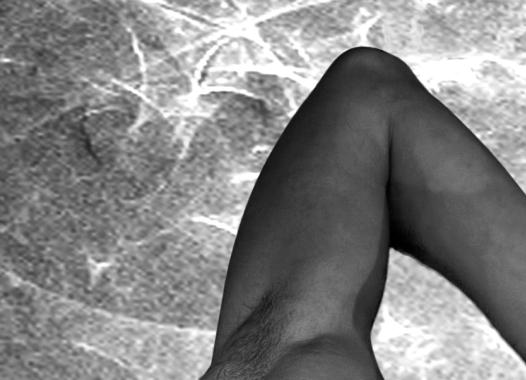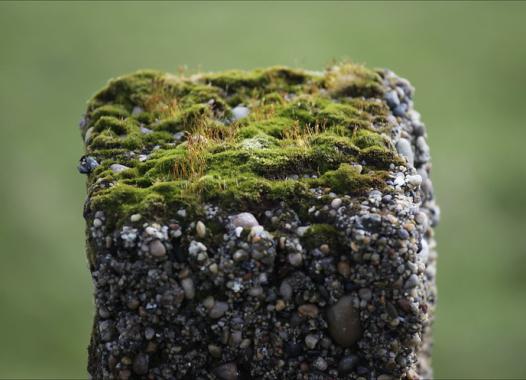
278
“But in comics nothing is impossible. It is proven in this story. Words unite with pictures in perfect complement. Love unites with horror; animal with vegetable; male with female; the natural with the supernatural. For a few brief pages we are given a tantalizing glimpse of what it might be like if we were big enough to realize all the possibilities of our myopic existences; if we were to find the way to truly embrace the mystery and begin ‘loving the alien.’ But that’s another story – another dangerous vision.”
Jamie Delano, July 1990, Introduction to Swamp Thing “Love and Death”
Following a one-off appearance in the comic horror anthology series House of Secrets, Len Wein and Bernie Wrightson’s Swamp Thing was given its own title run from 1972 to 1976. In the series, scientists Alec and Linda Holland work diligently at a biorestorative formula that encourages the sustainable growth of plants and greenery regardless of environment. Due to the highly classified nature of their work, the couple and their formula are hidden deep within the Louisiana swamp and placed under the protective detail of Lt. Matthew Cable. However, even under Cable’s watchful eye, Alec and Linda’s work is tragically interrupted when a nefarious criminal syndicate places a deadly explosive device in their laboratory. The ensuing catastrophic explosion forces Alec to hurl his aflamed body into the nearby swamp, where it mixes with the remnants of his formula to produce a “muck-encrusted” caricature of the man he once was (Wein & Wrightson, 1972, p. 31). No longer human, Alec emerges from the shallows of his would-be grave a humanoid-vegetal hybrid known only as ‘Swamp Thing.’ When the creature returns days later to its home on land, Swamp Thing finds it is too late to save Linda, who has been shot and killed by the syndicate’s goons. The rest of the series is spent tracing Swamp Thing’s journeys as it attempts to evade Cable’s detection, who mistakenly suspects the monster for Linda’s murder, while simultaneously protecting Cable and eventually the plucky Abigail Arcane from bizarre evil-doers and various Monsters of the Week.
When the series was cancelled due to declining interest, Swamp Thing was left to rot in the ever-growing hollows of DC Comics’ archives until 1982, when the company decided to revive the series to coincide with the release of Wes Craven’s film, Swamp Thing. Written by Marty Pasko and pencilled by Tom Yeates, this series preserves some of the original run’s major characters, with the added addition of seeing Abigail and Matthew marry. It also introduces a new series of villainous characters, most importantly the Sunderland Corporation and an affiliate government agency known as the Defense Department Intelligence, both of which work to cooperatively orchestrate Swamp Thing’s capture. Brought down in a hail of bullets, the corpse of the creature is taken back to Sunderland’s laboratory for dissection. It is there, in the cold chambers of the lab, where Alan Moore and Steve Bissette find the creature when they begin working on the comic in 1984.[1]
Literally tasked with bringing the monster back to life, Moore and Bissette’s run would see a complete overhaul of the Swamp Thing canon, including a small but significant twist in the character’s origin story. It is this shift – from conceiving of the monster as Alec trapped within the swamp to imagining the swamp as merging with the traces of Alec’s human subjectivity and memory – that serves as the central point of departure for the following analysis. In this essay, we suggest that this new conceptualization of Swamp Thing re-positions the creature as a thing; an obdurate entity that does not easily adhere to rigid classifications of ‘human’ or ‘plant,’ of ‘animate’ or ‘inanimate,’ of ‘original’ or ‘copy’ (even if characters within the comic text may argue otherwise). Furthermore, we posit that the unintelligible thingness of Swamp Thing (its aberrant vegetal materiality, its assemblage of plant and man, its monstrous amorphousness) questions the ontological integrity of the ‘human’, in so far as it is predicated upon a stringent definitional adherence to the forms and boundaries that constitute the body. In other words, the horror of Swamp Thing’s unclassifiable materiality resides in its ability to provoke a categorical crisis that challenges the ‘universal’ naturalization of the normative human form.
From here, we move into a discussion on Swamp Thing’s participation in sexual and romantic practices with his human love-interest, Abigail Arcane.[2] It is in these messy exchanges, instances wherein (human) bodies are expected to engage with one another in visceral and carnal ways, that Swamp Thing’s presence not only appears to be a forcible transgression of ‘natural law’ but collapses the very morphological taxonomies on which such law remains contingent. Even in consideration of the creature’s frequent masculine gendering and anthropomorphism the possible coding of his relationship with Abby as conventionally monogamous and cis-heterosexual is effectively destroyed when we re-read Swamp Thing as a thing, a materiality that cannot meet the stringent morphological demands that constitute traditional able-bodied, reproductive, monogamous, cis- and hetero-normative frameworks of sexuality. While many conservative horror narratives may present the thing-like creature as something to be defeated or destroyed precisely because it threatens to amalgamate gendered and sexual boundaries, Moore and Bissette’s comic champions the liberatory potential of the agential unhuman and its radical reinvention of both human corporeality and erotic practices.
“This is the human race! You have to keep running, or you get disqualified!”
In the first comic of Moore and Bissette’s run (Swamp Thing #21), fellow scientist and nature-communer Jason Woodrue (aka. the Floronic Man) performs a series of extensive tests on Swamp Thing and reveals the creature to be a crude imitation of a man – an agglomerate mass of vegetation that retains only traces of the consciousness and memories of the now-deceased Alec. As he explains to General Sunderland in “The Anatomy Lesson”, “We thought that the Swamp Thing was Alec Holland, somehow transformed into a plant. It wasn’t. It was a plant that thought it was Alec Holland!” (Moore & Bissette, 1990a, p.24) Determined by science to be a pure simulacra, this ‘new’ creature is diegetically understood as Holland’s ersatz double, a living mass of “muck”, “muskrat bones”, and “luscious decay”, who pathetically can only embody an approximation of the ‘man’ he once was (Moore, Bissette, and Totleben, p.58). In the moments following Woodrue’s diagnosis, Swamp Thing breaks free of the cryogenic shackles that hold it only to confront the truth of its existence: no longer a ‘man’, the Swamp Thing begins the next saga of its journeys facing a grave identity crisis.
Upon escaping, the creature returns to its home in Louisiana where it allows its ‘body’ to rot back into the mossy undergrowth of the swamp. Meanwhile, in its mind’s eye, Swamp Thing hurdles itself through a psychotropic landscape of monstrous creatures from its past, traversing the liminal space between consciousness and memory with the increasingly deteriorating corpse of the now-deceased Alec Holland pressed into its ‘chest.’ Finally left with only a lonely skull, Swamp Thing comes to rest on the bent trunk of a tree and the creature withers into a mossy flora-filled puddle, unable to continue. Alec's animated skull urges him forward: “Get up! C’mon! Get moving! This is the human race! You have to keep running, or you get disqualified!” (Moore & Bissette, 1990a, p.55). But in halting its momentum and subsuming itself into the swamp, the creature rejects the imperative to preserve its humanity, as defined by participatory narratives of progress and movement. Abiding by Aristotelian law, in which plants are viewed as devoid of the necessary awareness and mentality to compete as agential matter, Swamp Thing’s abandonment of its human identity in favour of a vegetal existence seems only to confirm a narrow definition of flora as the passive backdrop for animal life (Hall, 2011, p.23). As its body loses its anthropomorphized form it becomes easier to accept Swamp Thing as a plant; no longer visibly legible as retaining a trace of the human form (a body which itself is based on the creature’s memory of Alec’s), Swamp Thing becomes engulfed into the landscape whereby the supposedly unique boundaries that carve out the human body from the natural world dissolve.

Figure 1. “Swamped…”
Elsewhere, outside of Swamp Thing’s imagination, a desperate Abby clings to Swamp Thing’s humanity even as the creature mentally acquiesces into an acceptance of its plant-ness. “You’re human, Alec… Alec, you’re the most loving, the most gentle, the most human man… That I’ve ever met,” she pleads, even going so far as to infer that the Swamp Thing is not only undeniably human, but exceptionally and exceedingly so (Moore & Bissette, 1990a, p.49). Given Abby’s belief in Swamp Thing’s humanness, it is possible for readers to simply refuse the creature’s supposedly ‘lesser’ classification as a plant, perhaps deeming it as ‘overly-medicalizing,’ ‘culturally-constructed,’ or simply taxonomically inaccurate. But in following the post-humanist imperative of plant studies, it may be less productive for us to attempt to rectify various historical definitions of what the human is or can be than to challenge our very investments in the category itself. Other allied scholarship within critical-race-, disability, and trans*-studies, also works to undermine contemporary investments in expanding the inclusivity of the ‘human’, arguing for a reconsideration of the category’s utility outright. Eunjung Kim, for example, has recently explored the notion of ‘un-becoming human’ as a useful framework for an anti-ableist approach to the body, one which disavows aforementioned Aristotelian definitions of the ‘human’ as always an active being (an equivalence that also holds true under modern capitalism) to embrace the possibilities offered in “embodying objecthood, surrendering agency, and practicing powerlessness” (Kim, 2015, p.296). Similarly, Susan Stryker has aligned her speaking position as a transsexual with Frankenstein’s monster in order to altogether “forgo the human, a set of criteria by which I could only fail as an embodied subject” (Stryker, 2015, p.227). So while Abby’s resolve over Swamp Thing’s humanity may be well-intentioned, it may also function to hold Swamp Thing and its body in painful relation to an ideal that it ultimately cannot fulfill while simultaneously erasing the complexities of its multiplicity of ontological, material, and formal possibilities.
In some capacities, the impulse throughout the text to determine whether Swamp Thing is a plant, a plant-monster, a human, or a human-plant hybrid only plays into the imperative to classify organic matter based on ontological distinctions and visual taxonomies. While attempting to demonstrate how Swamp Thing is indefinable as a ‘plant’ or ‘human’, such readings admittedly only preserve the very classificatory divisions that plant studies seeks to trouble. As T.S. Miller (2012) writes, the paradox of dealing with agential plants (i.e. monster plants) often becomes one of domestication; as soon as plants transgress their assumed passive behaviours to become monstrous, the horror they incite is immediately diluted by the tendency to reconceptualise them via zoocentric logics. For Miller, we assuage our dis-ease at confronting plants that move beyond their ‘natural’ boundary as purely backdrop to human and animal activity by reassuring ourselves that the monster was not a plant after all, but rather an animal (or human) in disguise (Miller, 2012, p.469).[3] In the case of Swamp Thing, we see an inversion of this typical generic convention, whereby we encounter a ‘plant’ that has been caught wearing the suit of a man. In some ways, this scenario is even more horrific than the former since it strikes at humanity’s steadfast belief in its unshakable ontology. While the domesticated monster-plant may force us to question taxonomic hierarchies of agential matter (why a plant cannot be as active as an animal, for instance), Swamp Thing presents humanity with its own existential crisis; for how safe is the human body or identity if it can be so easily ‘impersonated’ by a plant? Yet, the possibilities offered by this generic inversion can easily be swept aside if we, like Abby, take up camp in ‘team human’ and refuse to let go of the belief in Swamp Thing’s humanity – thereby effectively challenging whether the creature was performing any impersonation at all. And here we are met with an endless cycle of diluted analyses that do little to question the narrow frameworks of ‘plant’ and ‘human’ that make this game so endlessly exhausting in the first place.
Ultimately, it seems as though neither taxonomical category can completely compensate for the complexity of a creature, as even the creature itself cannot be sure of who or what it is. Disturbed from its mossy slumber, Swamp Thing awakens angered at the circumstances that have left him unable to stake a claim to any singular identity. In its narration, the creature explains, “They wouldn’t let me be human and I became… a monster… but they wouldn’t let me be a monster… so I became a plant. And now… you won't let me… be a plant” (Moore & Bissette, 1990a, p.72). Caught in categorical limbo, Swamp Thing emerges as something completely Other to both itself and the principle characters that surround it. It is this ‘otherness’, which cannot be fully captured by the term ‘plant-monster,’ that is perhaps so well suited to the language of the ‘thing’ and by extension ‘thing theory’. ‘Thing’, as John Plotz (2005) points out, is “far better than any other word at summing up imponderable, slightly creepy what-is-it-ness” and is therefore best suited to that which language fails to name (110). Thing theory’s greatest asset to our project, therefore, rests in its ability to make sense of phenomena that exist at the edges of language, as well as on the margins of cognition and material substance (Plotz, 2005, 110).
As a sub-field of object studies, thing theory grapples with the stark divide between subject and object distinctions that comprises what Foucault (1990) has called the “grid of intelligibility” (Foucault, 1976, p.93). Following the work of Michel Serres, Bruno Latour (1993) has advocated for doing away with modernity’s subject/object divide entirely, instead insisting on a view of the world as an entangled composite of “quasi-subjects” and “quasi-objects” (Latour, 1993, p.10-11, cited in Brown, 2001, p. 12). Part of the ‘monstrousness’ of the thing, then, is its role in compromising our ability to take comfort in the sovereignty of our own selves by challenging the divide between the self and other, the inside and outside, where I end and where you (or anything else) may begin. Unable to be properly ordered or classified, things defy prescriptive hierarchical values that demand the subordination of objects or inert matter to the all-powerful subject. As thing theorists clarify, while ‘objects’ exist in dialectical opposition to ‘subjects,’ ‘things’ occupy the realm of the in-between, making the thing an intrinsic troubler of the modern project’s impulse to organize, classify and ‘other’.
Furthermore, Bill Brown (2001) and other thing theorists have worked to re-frame our phenomenological inhabitance of this divide by inviting us to take notice of such “moments of encounter” as receiving a paper-cut or stubbing one’s toe on a misplaced toy (Brown, 2001, p.3-4). In these moments of unintentional contact, things become those stubborn materialities that refuse to submit to the supposed supremacy of the (human) subject, asserting themselves at times and in places least convenient for ‘us’ and emphasizing the body’s status as a thing like any other. Similarly, Miller (2012) makes the case that plants – much like objects – only come into human purview when they move beyond the realm of the passive into that of the monstrously active (2012, p.462). Often characterized by radical overgrowth, hyper-reproduction, and/or a disturbing craving to ensnare, consume and devour, monstrous plants disrupt already uneasy hierarchies of subjecthood by rearing their petal, tendril, or leafy heads in unexpected forms and places. In both instances it is the surpassing of expectation that forces us, the human subject, to take notice of the ‘objects’ we once formerly subjugated with ignorance and ease. Yet, Swamp Thing not only forces us into such a challenging encounter, but altogether robs of us of an ability to simply dismiss its actions as belonging to an overly-active plant; after all, it remains a significant detail that the character is not the Swamp Monster or even the Swamp Creature, but the Swamp Thing, suggesting that even language itself cannot possibly encompass all the horrors, excesses, and potentialities that this character contains within (and beyond) itself.
“Does this mean we’re going out?”
The crisis of Swamp Thing’s non-human form prompts an ancillary crisis for the comic’s narrative; if Swamp Thing does not possess a ‘human’ (or even ‘non-human animal’) body, how might it engage in erotic or sexual communion with its human lover? Though it appears that such a communion is mutually desired, the Swamp Thing dejectedly acknowledges that it is unable to fulfill Abby’s carnal need for “more from love than the taste of lime” (Moore & Bissette, 1990b, p.191).[4] However, this dejection is short-lived; where some writers may have maintained Swamp Thing’s inability to approximate human sexual acts as a failure, Moore and Bissette take the opportunity to perform a radical re-imagining of both ‘sex’ and eroticism. Though Swamp Thing insists there should be “some form… of communion…” both the creature and Abby agree that it “doesn’t have to be physical” (Moore & Bissette, 1990b, p.192-3).
Though we hesitate to claim Moore and Bissette’s intentions as aligned with any political agenda, expanding the given possibilities of what constitutes physical or erotic pleasure resonates with queer, feminist, trans*, and crip sensibilities for the ways in which such an expansion necessarily challenges regulatory discursive regimes of ‘sexuality’ and ‘the body.’ Breaking from cis-heteronormative models of sex as always already reducible to penal-vaginal intercourse not only serves to bolster the fantastical element of the comic, but also accentuates the very unimaginative and limiting nature of this contemporary hegemonic model. The tapering of a more nebulous premodern eroticism, which saw the entire body (and beyond) as a site of pleasure rather than merely its erogenous zones, took place under a capitalist modernity in which such pleasures were eradicated by the need for a regulatable and identifiable ‘act.’ Streamlining more amorphous kinds of desire into the penal-vaginal sex act not only served to make ‘sex’ align with capitalist values of productivity but also of reproductivity, thus championing the monogamous, cis-heterosexual couple as the sexual unit par excellence.[5]
Unsure how to begin their communion, Swamp Thing detaches an orange tuber from its body and hands it to Abby as a prompting gesture. Upon eating the engorged stem, Abby is sent into a fantastical state of ecstasy – a universal melding of consciousnesses similar to popular conceptions of a psychedelic ‘trip’ – in which she claims that she and the Thing have become “one creature” (Moore & Bissette, 1990, p.200). This claim is reinforced by Bissette’s visuals, which depict Swamp Thing’s embrace of Abby as an envelopment of her skin into the folds of its mossy flesh; the collapse of bodily integrity and the integration of the ‘self’ into the ‘other’ is here presented as an encounter with the sublime. Within this nine-paged kaleidoscopic sequence, Abby and the Swamp Thing fuse not only with one another but with the collective consciousness of all that exists. Abby’s text reads: “Where we touch, the fibers merge and intertangle. I am no longer certain where I end… where he begins… I feel my own hand as he feels it, a warm bird caged within my strong green fingers, pulse hammering in its breast… we blur together, unresisting… the bubbles rise” (Moore & Bissette, 1990b, 198-199, ellipses in orig.).

Figure 2. “We…are…one creature…”
Using the work of Luce Irigaray, we can read the moment of Swamp Thing’s fusion with/into Abby as queerly subversive to the extent that it provides a revisionary model of sexuality that transgresses aforementioned heteronormative logics of penetrative intercourse. Proposing a radical re-evaluation of sexual activity that positions the feminine body as actively enveloping or embracing the penis, Irigaray’s understanding of sexuality counters narratives of feminine passivity by asserting that a woman’s central mode of eroticism resides in the multiplicity of her body, and its ability to reach beyond the singularity of phallocentric morphological values.[6] Since she is unable, as well as unwilling, to abide by the logics of heteronormative sexual exchanges – whereby only one ‘member’ of the duo merits release – woman is free to create new forms of embodiment that attend to the multiple erogenous zones she possesses. Her pleasure extends beyond the vagina and the vulva to encompass her clitoris, her breasts, the folds of her skin, the nape of her neck, and all other regions often neglected in a sexual encounter designed solely for the purpose of male orgasm (Irigaray, 1985, p.26). In Abby’s first erotic communion with the creature, feminine passivity is transformed and re-presented as active consumption, as she eats the tuber from her lover’s body.
When first presented with the extracted tuber, Abby is originally startled by the request and stutters, “Uh… what you want me to, uh… What, you mean, like, I’m supposed to, uh… Eat it?” (Moore & Bissette, 1990b, p.193). Momentarily frozen, Abby is unable to process what is being asked of her and her body. Perhaps she recalls an earlier moment when she vomited at the very thought of eating one of the creature’s tubers.[7] Previously viewing such an action as repulsive and abject, Abby reconsiders her relationship to the Swamp Thing, which in turn forces her to adopt a new expression of sexual intimacy. What the creature asks of Abby is to reconceptualize how she understands bodily pleasure. Here, an action as simple as pressing one’s lips against a plant’s stem can begin a sexual reawakening, such that one recognizes the potency of new smells, tastes, and textures. “Together,” Abby explains, “we bathe in raw life: honey rolls across our tongue. The fragrance of decay, mesmeric and overwhelming, excites our nostrils” (Moore & Bissette, 1990b, p.201). In Irigarian fashion, Abby allows her body to become flooded with erotic potential as each of her senses aliven at her encounter with the thing. Hers is a body no longer limited but magnificently open to the world around her.

Figure 3. “I never realized… that the world… was like this…”
The disorienting effects of this erotic encounter in Swamp Thing are visually-illustrated in Bissette’s shift from portrait to landscape page orientations; here, the comic reader must literally rotate either their body or the physical text in order to continue reading - or rather, in order to themselves continue to inhabit the encounter. Connecting this to the work of Sara Ahmed, we can consider Bissette’s disorientation of the reader as a queering of the spatiality of comics, as well as of Abby’s assumed straight sexuality, which, as mentioned above, involves particular perceptions about how the ‘self’ coheres in relation to dominant cisheteronormative systems. In her book, Queer Phenomenology, Ahmed takes up the ‘orientation’ of sexual orientation to argue that straightness demands a naturalization of a particular spatiality, where orientations toward proper, heterosexual love objects, toward marriage and reproductive futurity, are normalized to keep bodies “in line.” Reminding us that queer is etymologically a spatial term, from the Indo-European root for ‘twist’, Ahmed conceptualizes queerness as a kind of spatial disorientation, citing Maurice Merleau-Ponty’s claim that queer moments occur when “the world no longer appears ‘the right way up’” (Ahmed, 2006, p.65). In reconfiguring our spatial relationship to the comic book for the duration of Swamp Thing and Abby’s erotic communion, we are forced to break with the normative vertical mode of reading and temporarily inhabit the horizontality of queerness.
hough the understanding of Abby as engaging in wholly ‘queer’ sex acts could be undercut by the traditional reading of the tuber as a phallic symbol that penetrates her body, the duality of this moment – where we may read Abby as both actively consuming a piece of Swamp Thing at the same time she is penetrated by it – disrupts the established power structures that preserve normative sexual acts. In the accompanying visual images of this scenario, we see Abby take the tuber in her hand, gripping it as one might do a phallus prior to fellatio. She places it into her mouth where it begins to ooze with liquid at first ‘bite’, the ejaculatory imagery only furthering the mirroring of cis-heteronormative encounters. But re-reading this moment through the lens of Irigaray disrupts the supremacy of the ‘active’/‘passive’ binary integral to the power structure of patriarchal cisheteronormative sexual ‘intercourse,’ instead allowing us to see the act of envelopment as both agential and ‘active.’ Bissette’s illustrations aid in this reading, foregrounding Abby’s hands firmly wrapped around the tuber as she takes a part of Swamp Thing into her mouth.

Figure 4. “Does… this idea… repel you?” (cropped from original)

Figure 5. “S’like a sort of perfume taste… like cardamom.” (cropped from original)
The act of envelopment, which is forwarded as the central mode of sexual communion in the text, is presented as both desirous and deadly. A staple of the plant horror genre, the plant’s embrace can be at once all-consuming, with potentially limitless orgasmic possibilities, or all-devouring, whereby passion and bodily integrity become mere deceptions.[8] We come to fear the anthropophagous plant not only because its risk of consumption seems so hyperactive in juxtaposition against its ‘proper’ place at the bottom of the food chain (Miller, 2012, p.469), but also because the threat of being enveloped or ensnared transforms this supposedly ‘feminine’, ‘passive,’ or ‘receptive’ (sexual) act into an actively agential one. Evoking the trope of the ‘monstrous feminine,’ the modes of ‘envelopment’ that are championed throughout Swamp Thing put the sovereignty and hegemony of the normative (coded here as the able-bodied cis-heterosexual male) human body into question.
In recent dialogue with Lee Edelman, Lauren Berlant (2013) contends that, “sex and love… induce a loosening of the subject that puts fear, pleasure, awkwardness, and above all experimentality in a scene that forces its participants to disturb what it has meant to be a person and to ‘have’ a world.” (Berlant & Edelman, 2013, p.117) Berlant’s words neatly summarize this paradox of relationality, specifically as it is experienced within the realm of the sexual; to put oneself into relation with another – to inhabit an intimate encounter – always demands that one risks opening the ‘self’ (both in the subjective and corporeal sense) up to change, transformation, or disintegration. While the disturbing effects Berlant describes here may be generated by or within any encounter with an other/‘Other’, the encounter with ‘the thing’ produces particular fears about the body that are exacerbated by Moore and Bissette’s depiction of a monstrously queer eroticism. In Swamp Thing, the queerness of the creature’s ‘thing-ed’ form evokes a wealth of overlapping anxieties – from the human body’s status as ‘mere’ matter, to the messy inability to limit or contain its form or abjections, to the immeasurable possibilities for how it can relate with, into, or against other bodies. Yet, almost all these horrors are surpassed or superseded by the supposed ‘unnaturalness’ of the unabashed portrayal of ‘thing’-human sexual encounters. In subsequent issues of the comic, a photographer manages to capture images of Abby and Swamp Thing’s trysts on camera, adding that witnessing such a scene caused him to nearly vomit. “I tellya,” he explains, “I saw things that’d turn a man’s stomach before they finally up an’ left!” (Moore & Bissette, 2001, p.100) Though selling the photographs to a local newspaper seems impossible at first due to the editors’ doubts over the authenticity of the creature, their interest is peaked when one newspaper employee is able to identify Abby as a local childcare worker. The rhetorics employed here, both of disgust and of parental concern, further work to position Abby and Swamp Thing’s relationship as queerly deviant. Here, the couple’s relationship proves to be horrific for those who witness their union, whether in real life or mediated by the newspaper’s photographs. It is their troubling of the ‘natural’ order of things – together – that proves ultimately more monstrous than Swamp Thing itself, who seems not to set off any particular alarms when it travels alone. It is the moment in which Swamp Thing entwines itself with/into Abby, that the couple are condemned.
To entwine oneself with Swamp Thing is therefore to reject the social order, to dismiss or do away with the desperate need for the human and to admit oneness to the throws a world beyond imagination. It means subsuming oneself into the muck and moss that form the swamp and in turn form the ‘bones’ and ‘flesh’ of a creature that itself cannot fit or abide by any ordered structuring of matter. Above all else, to embrace ‘the thing’ is to collapse the ‘necessary’ boundaries and limits that form the legibility of the external world. To kiss its lips is to enter into chaos and to begin a new material existence as a “thing among things” (Merleau-Ponty, 1964, p.63 cited in Brown, 2001, p.4).
Works Cited
Ahmed, S. (2006) Queer Phenomenology: Orientations, Objects, Others. Durham: Duke University Press
Brown, B. (2001) Thing Theory. Critical Inquiry. 28. (1, Autumn) p.1-22.
Delano, J. (1990) Introduction. In: Moore, A. & Bissette, S. Swamp Thing: Love and Death. New York: DC Comics. p.4-5.
Foucault, M. (1990) The History of Sexuality, Volume I: An Introduction. Trans. R. Hurley. 1978. New York: Vintage Books.
Hall, M. (2011) Plants as Persons: A Philosophical Botany. Albany: State University of New York.
Heidegger, M. (2009) The Thing. 1950. In: Candlin, F. and R. Guins (eds). The Object Reader. London & New York: Routledge. p. 113-124.
Irigaray, L. (1985) The Sex Which is Not One. Trans. C. Porter with C. Burke. 1977. Ithaca, New York: Cornell University Press.
Kim, E. (2015) Unbecoming Human: An Ethics of Objects. GLQ: A Journal of Lesbian and Gay Studies. 21. (2-3) p.295-320.
Latour, B. (1993) We Have Never Been Modern. Trans. C. Porter. Cambridge: Harvard University Press. As cited by Brown, B. (2001) Thing Theory. Critical Inquiry. 28. (1, Autumn) p.1-22.
Merleau-Ponty, M. (1964) Eye and Mind. Trans. C. Dallery. In: Edie, J.M. (ed & trans). The Primacy of Perception and Other Essays on Phenomenological Psychology, the Philosophy of Art, History, and Politics. Evanston: Northwestern University Press. As cited by Brown, B. (2001) Thing Theory. Critical Inquiry. 28. (1, Autumn) p.1-22.
Miller, T.S. (2012) Lives of the Monster Plants: The Revenge of the Vegetable in the Age of Animal Studies. Journal of the Fantastic in the Arts. 23. (3) p.460-479.
Moore, A. & Bissette, S. (1990a) Swamp Thing: The Saga of the Swamp Thing. 1984. New York: DC Comics.
Moore, A. & Bissette, S. (1990b) Swamp Thing: Love and Death. 1984-1985. New York: DC Comics.
Moore, A. & Bissette, S. (2001) Swamp Thing: A Murder of Crows. 1985-1986. New York: DC Comics.
Moore, A. Bissette, S. & Totleben, J. (1984) Saga of the Swamp Thing. The Comics Journal. (93). Stamford: Fantagraphics Inc. p.1-116.
Plotz, J. (2005) Can the Sofa Speak? A Look at Thing Theory. Criticism. 47. (1) p.109-118.
Stryker, S. (2015) Transing The Queer (In)human. In: Dossier Theorizing Queer Inhumanisms. GLQ: A Journal of Lesbian and Gay Studies. 21. (2-3) p.227-230.
Wein, L. & Wrightson, B. (1972) Swamp Thing #1. In: Wein, L. & Wrightson, B. Roots of the Swamp Thing. 2009. New York: DC Comics.
Wood, R. (2003) Hollywood from Vietnam to Reagan… Beyond. 1986. New York: Columbia University Press.
[1] Unlike the six-year hiatus between Wein and Wrightson’s comic and Pasko and Yeates’, Moore and Bissette would pick up the narrative without interruption to the weekly serial and prior continuity.
[2] During Pasko and Yeate’s run, it became clear that Abby and Matthew’s marriage was failing. Unable to connect with her husband due to his growing alcoholism and sexual perversity, Abby turns to Alec/ the Swamp Thing for comfort and connection. It is only in Moore and Bissette’s run that the couple acknowledges their mutual affection for one another and act on their physical desires.
[3] As notable examples of this generic convention Miller points to John Murray Reynold’s “The Devil-Plant” (Weird Tales, 1928) and Laurence Manning’s “Seeds from Space” (Wonder Stories, 1935).
[4] Upon first kissing Swamp Thing, Abby notes that the creature tastes “like lime, but… not as sharp” (Moore & Bissette, 1990b, 190).
[5] See M. Foucault, The History of Sexuality, Volume I: An Introduction.
[6] Irigaray’s use of language around the gendered body (and specifically the ‘female’ or ‘feminine’ body) is indicative of the time at which she was writing. While her alignment of ‘womanness’ with a particular body has since been troubled by trans* scholars, her interventions into the discursive construction of this body nevertheless continue to serve as useful starting points for feminist, queer, and trans* frameworks at the same time as they warrant further engagement and critique.
[7] This occurs in Swamp Thing #22, wherein Woodrue explains to Abby and Cable that the creature’s tubers are edible. Abby’s first erotic communion with the creature occurs much later in the series, in Swamp Thing #34.
[8] See Meeker, N. & Szabari, A. (2012) From the Century of the Pods to the Century of the Plants: Plant Horror, Politics, and Vegetal Ontology. Discourse. 34. (1,Winter) pp. 32–58.
Join the colloquy
Join the colloquy
Queer Environmentalities
more
Scholars working to bring these two fields together argue that each has undermined its central goals by keeping aloof from the other: That ecological criticism has been fundamentally unable to broach the concerns of queer theory when it has privileged a version of "natural" that foregrounds heteronormativity; and that queer theory, for its part, has had no room for a consideration of the environment because the liberatory impulse of queerness has gotten much of its momentum from the turn away from nature, the de-coupling of human choices from a reigning "natural" order. But, queer environmentalists ask: Can an ecocritical enterprise—one aimed at revealing and reversing the destruction brought about by human-centric conceptions of environment—hope for a success if it fails to take into consideration the injustices of imagining the human as male and heterosexual?
This Colloquy takes its title from Robert Azzarello’s 2012 book Queer Environmentality, in which Azzarello argues that a synthesis of ecocriticism and queer theory can reveal that "the questions and politics of human sexuality are always entwined with the questions and politics of the other-than-human world." Criticism that attends to our queer environmentalities can enable profound resistances to, as Azzarello puts it, "conventional notions of the strange matrix between the human, the natural, and the sexual." Such approaches can reveal the Anthropocene as not only a period in which humankind has altered nature, but also as a period in which humankind has constructed the definitions of nature, and can throw into relief unarticulated valuations of scientific discourse and identity politics in making humans’ relationships with the non-human mean.
Since their budding in the 1990s in the pioneering work of ecofeminist critics such as Catriona Sandilands and Greta Gaard, queer-ecological methods have gained momentum across humanistic disciplines, periods, and national boundaries. This Colloquy highlights exciting new work in literary and cultural histories and presents dance and performance, film, music, urban studies, and political ecology. It showcases a range of approaches, from postcolonial to trans theory, to objects of study spanning our aesthetic productions and our political, economic, and rhetorical responses to the challenges of managing climate change and natural resources. The pieces featured here expand conceptions of environment and sexuality to include the human(-made) and the non-human, the intersections of bodies' outsides and insides, minds and discourses, making possible new ways to think filiation and affiliation, desire and sex, realisms and un-realisms, aesthetics and politics.
